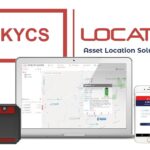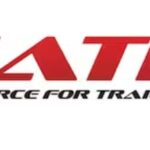How Market Conditions Shape Equipment Leasing Rates
Understanding the Forces Behind Your Lease Terms The relationship between market conditions and equipment leasing rates is a delicate balance of economic trends, risk management, and strategic business decisions. When you lease equipment, these factors shape the rates you encounter, reflecting the broader market’s health and the specific dynamics of your industry. In this article, […]
, October 24, 2024
Understanding the Forces Behind Your Lease Terms
The relationship between market conditions and equipment leasing rates is a delicate balance of economic trends, risk management, and strategic business decisions. When you lease equipment, these factors shape the rates you encounter, reflecting the broader market’s health and the specific dynamics of your industry. In this article, we’ll break down the primary forces behind leasing rates and offer insights into how you can better navigate these influences.
The Economic Foundation
Macroeconomic Indicators
At the heart of leasing rates is the overall economic environment. Key macroeconomic indicators significantly affect how lenders determine the cost of leasing:
- GDP Growth and Business Confidence
- In periods of strong economic growth, leasing rates tend to decrease. Why?
- Companies experience more stability, which reduces the risk for lenders.
- Increased investment confidence leads to a more competitive market, pushing rates down.
- Conversely, during economic downturns, leasing rates often rise because:
- Lenders face heightened risks of defaults.
- Market liquidity tightens, and uncertain conditions drive up the cost of capital.
- In periods of strong economic growth, leasing rates tend to decrease. Why?
- Inflation’s Double-Edged Sword
Inflation plays a complex role in shaping leasing rates:- High Inflation: Lenders may increase rates to ensure they earn real returns, factoring in the depreciating value of money. Rising equipment replacement costs also push rates upward.
- Low Inflation: In more stable inflation environments, competitive rates become more common. Businesses can plan leases more predictably, which creates a more stable financing landscape.
The Policy Landscape
Central Bank Influence
Monetary policies, particularly those set by central banks like the Bank of Canada, have wide-reaching impacts on the equipment leasing market:
- Bank of Canada Actions
Interest rate decisions made by the Bank of Canada affect the entire financial ecosystem, including equipment leasing:- When the BOC raises interest rates, the cost of funds for leasing companies increases, driving up lease rates.
- These decisions also impact market liquidity and force leasing companies to reassess risks, leading to potentially higher costs for borrowers.
- Regulatory Environment
Changes in financial regulations can affect how leases are structured:- Stricter regulations may increase compliance costs and alter risk assessments, potentially raising rates.
- Conversely, regulatory relaxations can ease market pressures, providing more favorable terms for borrowers.
Industry-Specific Factors
Equipment and Sector Dynamics
Not all industries or equipment types are created equal when it comes to leasing:
- Equipment Considerations
- Depreciation: Some equipment depreciates faster than others, which impacts leasing rates.
- Secondary Market Value: Equipment that holds its value well after use may attract lower rates.
- Technological Obsolescence: Leasing for fast-evolving technology, where obsolescence is a concern, generally comes with higher rates.
- Industry Risk Profiles
- Leasing essential equipment like machinery in stable industries often carries less risk, meaning lower rates.
- Meanwhile, non-essential or high-risk industries, like retail or hospitality, may face higher rates due to uncertain growth prospects and market volatility.
Market Competition
The Supply Side
The number of participants and the level of competition in the leasing market directly affect the rates businesses encounter:
- Market Participants
- Traditional banks, specialized leasing companies, and alternative lenders all compete to offer leasing services.
- Manufacturer financing programs can also play a role, sometimes offering more competitive rates due to the vertical integration of services.
- Innovation Impact
- The rise of digital lending platforms and automated underwriting systems has created a more competitive environment, often leading to lower rates.
- These technological innovations allow for better risk assessment and faster approvals, contributing to rate variability based on borrower profiles.
Practical Implications for Businesses
Making Informed Decisions
Understanding how market conditions influence equipment leasing rates is crucial for businesses aiming to optimize their leasing strategies:
- Timing Considerations
- Monitoring macroeconomic indicators, such as GDP growth and interest rates, can help businesses time their leasing decisions more effectively.
- Industry trends, including technological advancements and regulatory changes, also offer guidance on when to lock in favorable terms.
- Negotiation Leverage
- Knowledge of market competition, alongside a strong credit profile and understanding of equipment values, provides leverage during rate negotiations.
- Businesses should also track performance metrics within their industry to better position themselves when securing leases.
Future Outlook
Emerging Trends
Several key trends are poised to shape leasing rates in the future:
- Technology Integration
- AI-driven pricing models and real-time rate adjustments will enable more dynamic and responsive rate-setting.
- Improved risk assessment tools, combined with enhanced data analytics, will provide more accurate leasing terms based on business performance and market conditions.
- Sustainability Factors
- As environmental regulations and ESG considerations grow in importance, businesses investing in green or sustainable equipment may face premiums or discounts in leasing rates.
- Carbon footprint impact and other environmental factors will become increasingly integrated into leasing risk assessments.
Strategic Recommendations
Optimizing Your Approach
To secure the best rates, businesses should adopt a proactive approach to equipment leasing:
- Research and Preparation
- Keep an eye on key economic indicators and stay informed about industry-specific trends.
- Build strong credit profiles and understand equipment values to improve negotiation outcomes.
- Research and compare multiple lenders to find the most competitive rates.
- Timing and Flexibility
- Be flexible in lease structures and maintain the ability to negotiate terms when market conditions are favorable.
- Develop and nurture relationships with lenders, positioning your business as a reliable partner during market shifts.
Conclusion
The complex relationship between market conditions and equipment leasing rates is shaped by various factors, including economic indicators, industry trends, and policy changes. By understanding these forces, businesses can better navigate the leasing market and secure favorable terms.
Staying informed about macroeconomic shifts, maintaining strong financial health, and building partnerships with reputable leasing providers will help businesses optimize their leasing strategies and secure financing that supports their long-term growth.
Factors Influencing Lease and Equipment Financing Rates for Manufacturing Equipment
Photo Credit: Photo by Nataliya Vaitkevich: https://www.pexels.com/photo/black-remote-control-beside-silver-round-analog-wall-clock-6120218/
Other Posts

Equipment Financing for Small Business Owners
Read More
Factors Influencing Lease and Equipment Financing Rates for Manufacturing Equipment
Read More
Exploration of How Interest Rate Changes Shape Business Equipment Financing For Small Business
Read More
The Crucial Role of Financial Wellness for Small Businesses
Read More
Maximize Your Savings: New Tax Deduction Allows 100% Write-Off for Equipment Purchases in 2023!
Read More
Protect Your Equipment; Theft Protection
Read More
INDUSTRY NEWS: NATDA Partners with Jocova Financial to Enhance Trailer Financing Opportunities in Canada
Read More
Why You Should Be Financing & Leasing Your Snow Equipment
Read More




